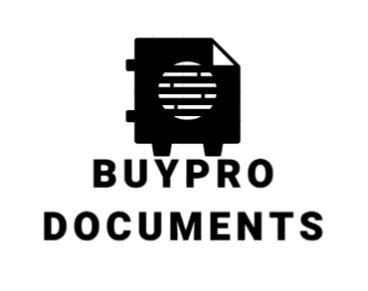Blog
Essential Steps for Securing Your Canadian Driver’s License
Essential Steps for Securing Your Canadian Driver’s License
Essential Steps for Securing Your Canadian Driver’s License Obtaining a Canadian Driver’s License is an important milestone for anyone living in or moving to Canada. Whether you are a new resident, an international student, or a citizen applying for the first time, having a valid driver’s license opens the door to independence, convenience, and mobility. This guide outlines all the essential steps to help you secure your Canadian Driver’s License smoothly and efficiently.
Understanding the Canadian Licensing System
Canada has a graduated licensing system, designed to help new drivers gain experience before obtaining a full license. Each province and territory manages its own licensing rules, but the general structure is similar nationwide. There are typically three stages:
-
Learner’s Permit (G1, Class 7, etc.) – The first stage where you learn driving basics under supervision.
-
Probationary or Intermediate License (G2, Class 5N, etc.) – Allows you to drive independently with certain restrictions.
-
Full License (G, Class 5, etc.) – Grants full driving privileges with no restrictions.
Understanding these stages helps you prepare for what’s ahead, whether you’re in Ontario, British Columbia, Alberta, or any other province.

1: Check Eligibility Requirements
Before applying for a Canadian driver’s license, make sure you meet the basic eligibility criteria. You must:
-
Be of the minimum driving age (usually 16 years old, depending on the province).
-
Provide valid proof of identity, such as a passport, permanent resident card, or birth certificate.
-
Be legally permitted to reside in Canada.
If you’re a new resident or visitor planning a long stay, check whether your existing foreign driver’s license can be used temporarily or exchanged for a Canadian one.
2: Gather the Required Documents
Documentation plays a crucial role in the application process. The documents you’ll need generally include:
-
Proof of Identity (e.g., passport, PR card, or immigration document)
-
Proof of Residency (e.g., utility bill, lease, or government letter)
-
Social Insurance Number (SIN) or equivalent, in some provinces
-
Existing Driver’s License (if applicable)
Ensure that all documents are original, up to date, and in English or French. If your documents are in another language, they must be officially translated.
3: Pass the Knowledge Test
The knowledge test is your first official step toward getting a driver’s license in Canada. This written or computerized exam evaluates your understanding of:
-
Traffic signs and road rules
-
Driving laws in your province or territory
-
Safe driving practices
To prepare, study your province’s driver’s handbook, which is available online or in print. Practice tests are also widely available online and are a great way to build confidence before taking the real exam.
Once you pass the test, you’ll receive a learner’s permit, which allows you to start driving under certain conditions—usually with a fully licensed driver in the passenger seat.
4: Complete Driver Training and Practice
Practice is the key to becoming a safe and confident driver. Many provinces encourage or require new drivers to complete driver education programs offered by licensed driving schools. These courses combine classroom instruction with practical lessons and can help reduce waiting times for your next license stage.
During this period, practice driving regularly in various conditions—day and night, in traffic, and during different weather situations. Gaining real-world experience will prepare you for the road test ahead.
5: Pass the Road Test
The road test is your opportunity to demonstrate your driving skills and understanding of road safety. You’ll need to show proficiency in:
-
Vehicle control and maneuvering
-
Parking and lane changes
-
Obeying signs, signals, and speed limits
-
Defensive driving and hazard awareness
Make sure your vehicle is in good condition before the test—lights, brakes, and signals must all work properly. Arrive early, stay calm, and follow the examiner’s instructions carefully.
Once you pass the road test, you’ll advance to the next stage of licensing or receive your full Canadian driver’s license, depending on your province’s regulations.
6: Pay the Applicable Fees
Each stage of licensing comes with associated fees, which vary across provinces. Typical fees include:
-
Knowledge test fee
-
Road test fee
-
License issuance fee
Always verify the exact amount and accepted payment methods before your appointment.
7: Receive Your Canadian Driver’s License
After successfully completing all requirements and paying the fees, you’ll be issued your Canadian driver’s license. In most provinces, you’ll receive a temporary paper license while the official plastic card is mailed to your address within a few weeks.
Your new license will display important information such as your name, photograph, signature, and license class. Be sure to carry it with you whenever you drive.
8: Maintain and Renew Your License
Canadian driver’s licenses are typically valid for five years, after which they must be renewed. Keeping your license current ensures you remain legally eligible to drive. To maintain your license:
-
Update your address or personal information if it changes.
-
Renew your license before it expires.
-
Follow all traffic laws to avoid penalties or suspensions.
Conclusion
Securing your Canadian driver’s license is a rewarding process that gives you freedom, flexibility, and independence on the road. By following these essential steps—from eligibility checks and document preparation to testing and renewal—you’ll be well-prepared to navigate the licensing process confidently.
Whether you’re a newcomer to Canada or a resident applying for the first time, understanding the system and preparing thoroughly will make the journey smoother. Start today and take the wheel toward your Canadian driving freedom.

